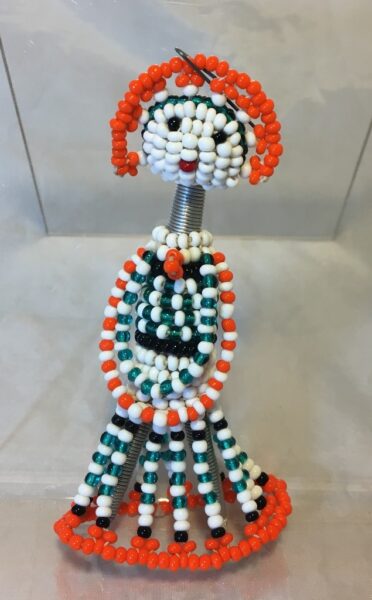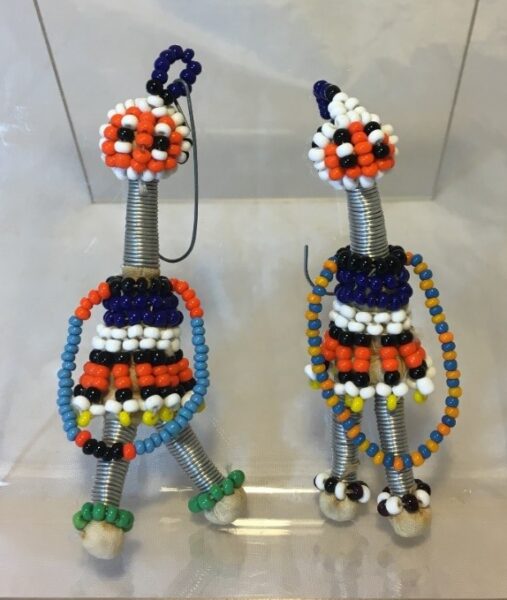
Ndebele culture
20th century
Glass beads, wire, and cotton,
L. 5.4 cm x W. 3 cm x H. 10.1 cm
BFPC collection #2013.6a

Ndebele culture
20th century
Glass beads, wire, and cotton, L. 3.3 cm x W. 2.7 cm x H. 9 cm
BFPC collection #2013.6b & 6c
The Pair of Bead and Wire Girls and the Bead and Wire Woman likely developed from both beadwork for courtship rituals and traditional dolls to become another type of figurine that was created for the tourist trade. Like the Beaded Figurine of a Girl, these wire figures also represent traditional Ndebele female dress; these figures, however, are completely made from beads and wire, and the neck rings that Ndbele women traditionally wear around their necks and legs are represented by sections of tightly coiled wire.
Like traditional Zulu beadwork, these figurines also follow specific color schemes and patterns. These figurines most closely relate to the isishunka color scheme, which is made up of seven colors including white, light blue, dark green, pale yellow, pink, red, and black. These figures have all these colors except for pink, and instead of red, they have orange beads. The isishunka scheme also has two different color fields: The umnqamulo color field is made up of solid colors, while the isiqaba color field is a plot of colors that could be compared to rows of crops in farmland. The plotting of colors is especially notable on the wire woman, as her skirt and her arms have a precise pattern that is reminiscent of rows of plants on a farm. Researched by Kylei Giles
For more information, you may contact the researcher(s) noted in the title of this exhibit entry, or Dr. Billie Follensbee, the professor of the course, at BillieFollensbee@MissouriState.edu
